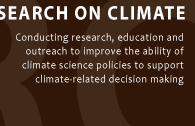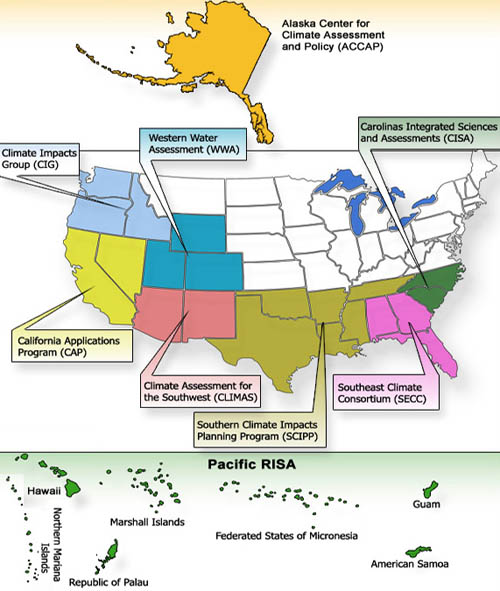

RISA PROGRAMS |
|
NOAA’s Regional Integrated Sciences and Assessments (RISA) programs use a variety of techniques to reconcile their scientific research efforts with their various users’ information demands, ranging from the informal to the formal. All of the RISAs engage in frequent communication with their stakeholders, starting their conversations early. These events involve one-on-one meetings, group meetings, or conversations over the phone. Informal communication provides a forum for both sides to clearly identify and understand the nature of the problem they seek to resolve, and to understand the unique contexts of potential solutions. Through such informal, iterative meetings, RISA researchers were able to adjust their own research objectives, provide existing information to stakeholders, or could producing information for which the users had no useful purpose. Moreover, these meetings created opportunities for both sides to develop trusting, mutually respectful relationships that facilitate future efforts.
|
 |
The RISAs also engaged in more formal efforts to reconcile supply with demand. For example, one RISA program created and administered formal surveys to thoroughly test the effectiveness of the RISA’s data and information products. Other surveys investigated how well decision makers understood the particular ways in which the data presented. The RISAs used these engagement opportunities to assess, adjust, initiate or abate individual research streams. As part of the RISA program researchers and program managers work closely to reconcile the supply and demand of scientific information. The program was designed with deliberate attention to the importance of understanding user needs and the usability of scientific results. Rather than relying on a traditional model of issuing a request for proposals – in which the request itself is the product of scientific advisory bodies – a new process was designed to require investigators to consult with stakeholders, and develop research agendas specific to the climate-related problems of a region. In addition to a high degree of interaction between the program managers and prospective research teams, managers worked hard to broaden participation in review and evaluation of individual RISAs, which has helped to widen the view of “excellence” espoused by the Program. |
|
RISA Programs as of 2009
|
|
